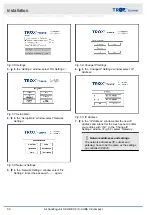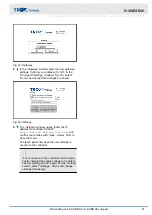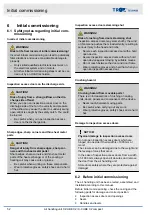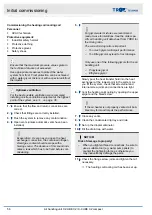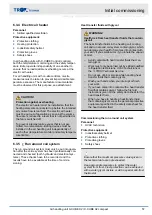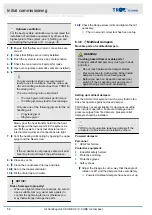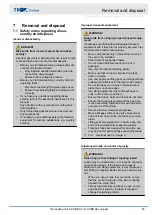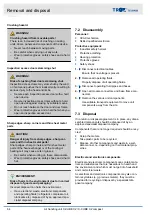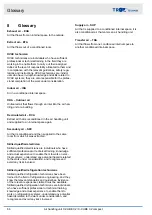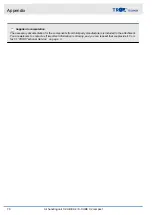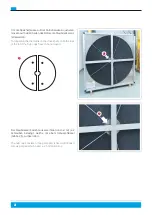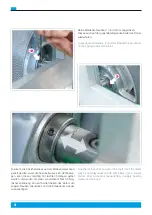
Crushing hazard.
WARNING!
Crushing hazard from movable parts!
There is an increased risk of crushing on casing
units, doors, panels and components of the device.
–
Never reach between moving parts.
–
Be careful when carrying out any work.
–
Wear protective gloves, safety shoes and a hard
hat.
Inspection access doors slamming shut
WARNING!
Risk of crushing from doors slamming shut
Inspection access doors may slam shut by the wind
or if someone pushes them inadvertently, resulting in
serious injury to the head and limbs.
–
Secure each inspection access door with a hold
open device.
–
Secure inspection access doors without a hold
open device against closing by suitable means.
–
Do not reach between the door and door frame.
–
Wear protective gloves and a hard hat when you
open an inspection access door.
Sharp edges, sharp corners and thin sheet metal
parts
CAUTION!
Danger of injury from sharp edges, sharp cor-
ners and thin sheet metal parts!
Sharp edges, sharp corners and thin sheet metal
parts of the heat exchanger or of the cooling or
heating coil may cause cuts or grazes.
–
Be careful when working on these components.
–
Wear protective gloves, safety shoes and a hard
hat.
ENVIRONMENT!
Risk of harm to the environment due to incorrect
disposal of goods and packaging!
Incorrect disposal can harm the environment.
–
Have electronic waste, electronic components
and operating fluids (refrigerant, compressor oil,
lubricants etc.) disposed of by an approved spe-
cialist disposal company.
7.2 Disassembly
Personnel:
HVAC technician
Skilled qualified electrician
Protective equipment:
Industrial safety helmet
Protective clothing
Hearing protection
Protective gloves
Safety shoes
1.
Disconnect electrical cables.
Ensure that no voltage is present.
2.
Remove all operating fluids.
Properly dispose of all operating fluids.
3.
Disconnect operating fluid pipes and hoses.
4.
Open all module connectors and base frame con-
nectors.
5.
Remove the various unit components.
Use suitable transport equipment to move unit
components away from the site.
7.3 Disposal
If no return or disposal agreement is in place, any disas-
sembled components should be disposed of by an
approved specialist disposal company.
Components that are no longer required should be recy-
cled:
Scrap the metals.
Take plastic parts to be recycled.
Dispose of other components and waste in a suit-
able manner, i.e. depending on their material prop-
erties.
Electrical and electronic components
Electrical and electronic components can contain mate-
rials and substances that are hazardous to health and
the environment and which must not get into household
and commercial waste.
As electrical and electronic components may also con-
tain recyclables (e.g. precious metals), they must be
provided for recycling or disposal by a specialist dis-
posal company.
Removal and disposal
Disposal
Air handling unit X-CUBE X2 / X-CUBE X2 compact
64

